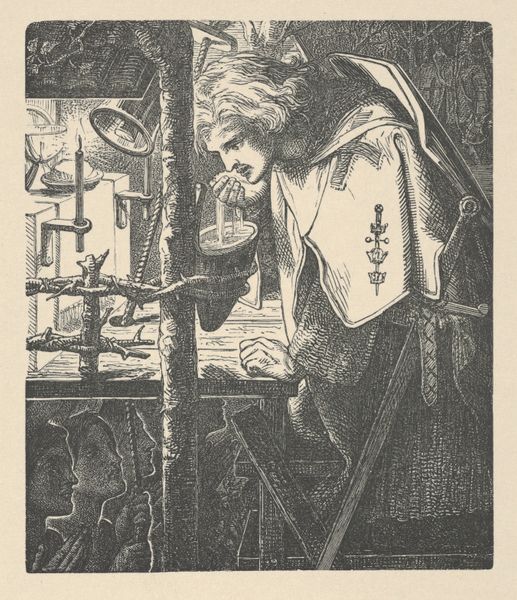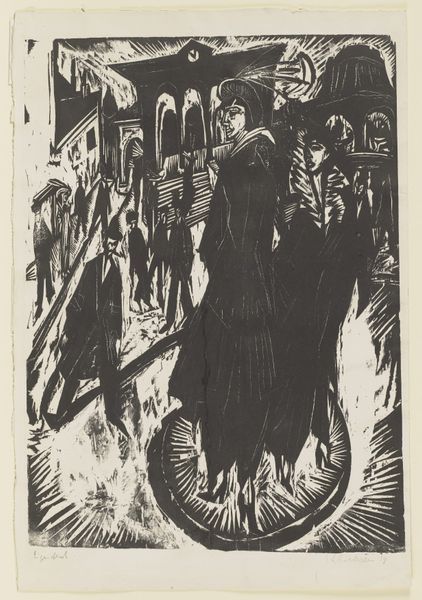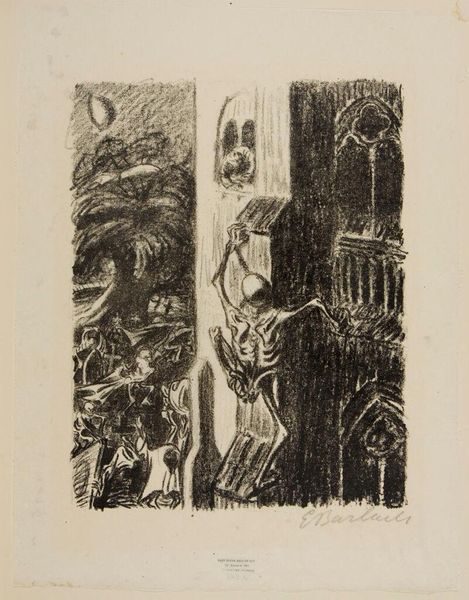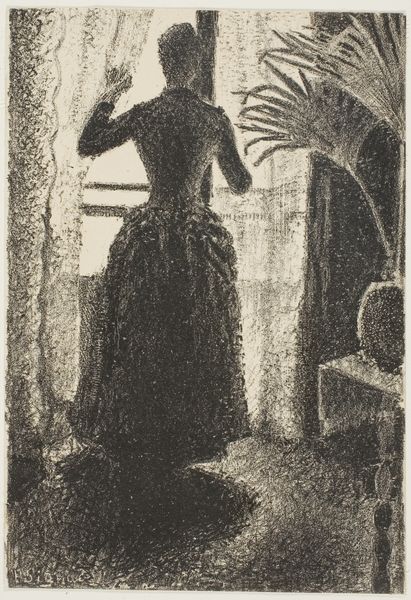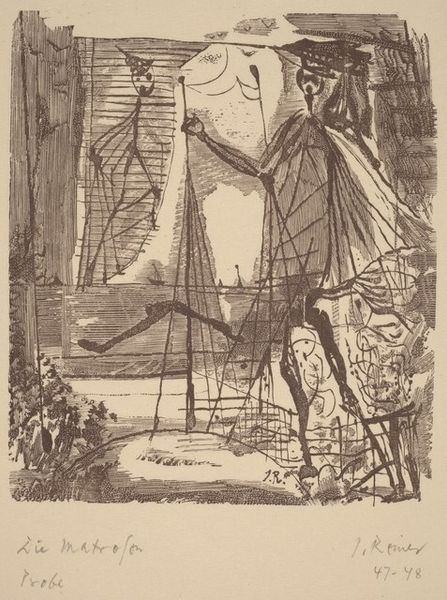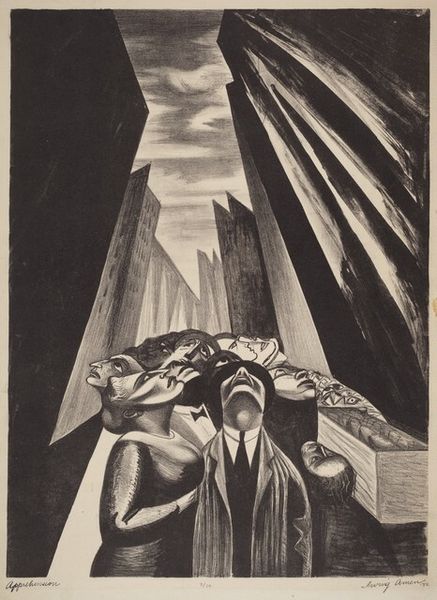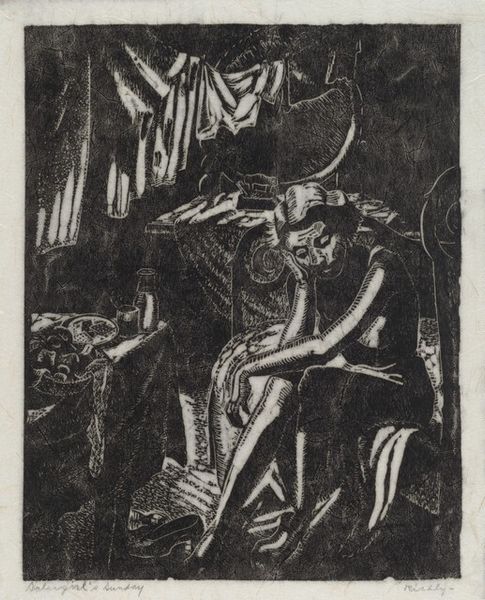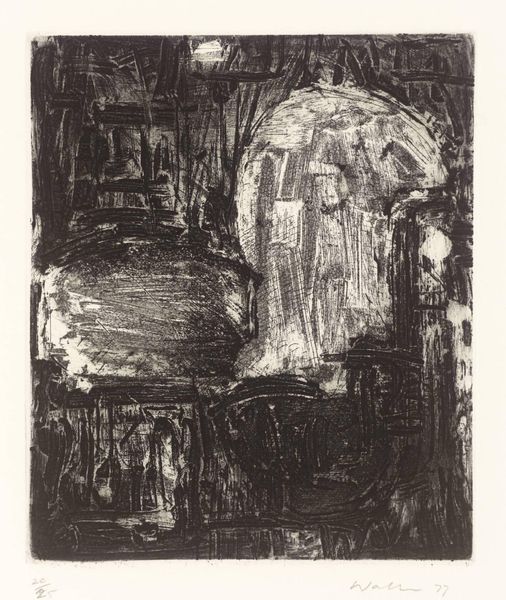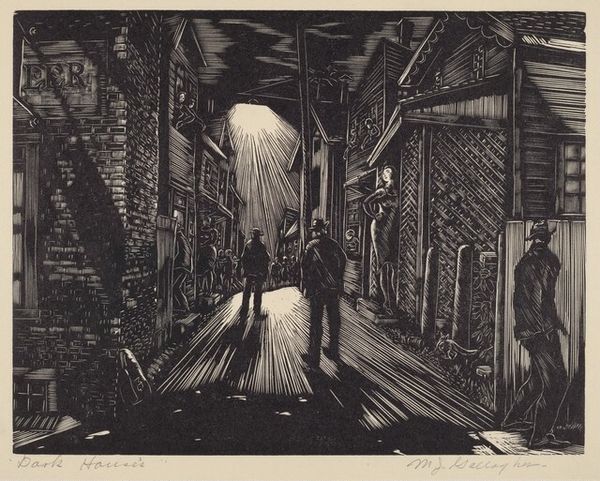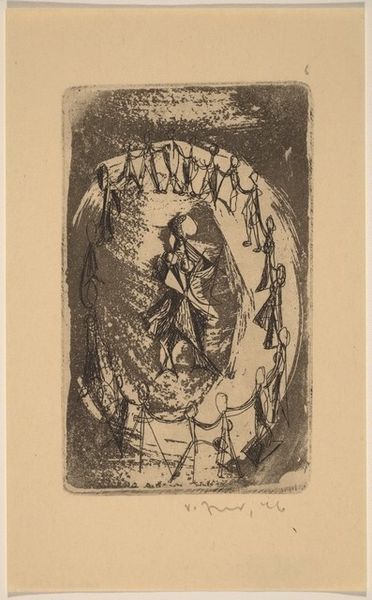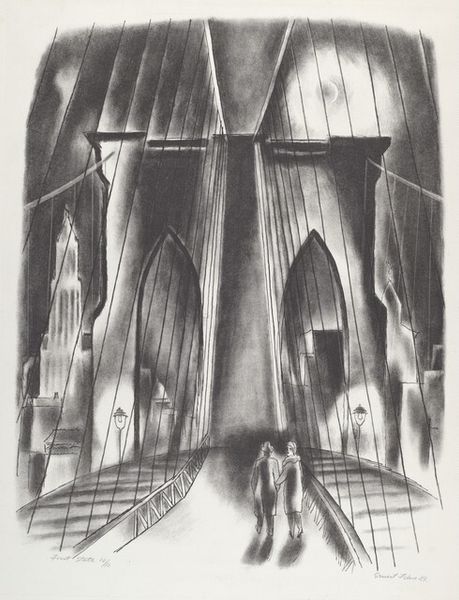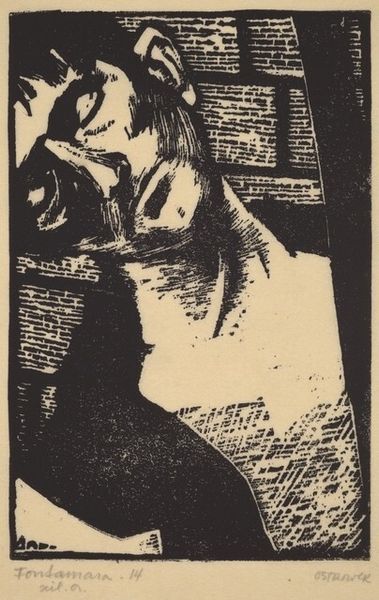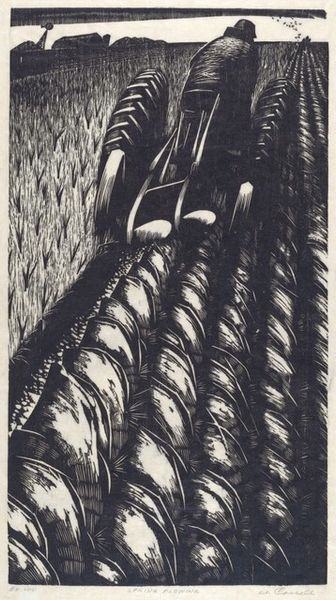
lithograph, print, ink
#
abstract-expressionism
#
lithograph
# print
#
charcoal drawing
#
form
#
ink
#
surrealism
#
abstraction
#
line
#
cityscape
Dimensions: Image: 362 x 259 mm Sheet: 430 x 318 mm
Copyright: National Gallery of Art: CC0 1.0
Curator: This piece is an untitled lithograph by Hans Gustav Burkhardt, created in 1948. It’s also rendered in ink, pushing the capabilities of printmaking. Editor: My first thought? Stark. Like a nightmare etching of a city struggling to breathe. The heavy lines really do capture this sense of urban anxiety. Curator: Absolutely. We see here the social consciousness that often ran through Burkhardt's work. The materiality itself is key, the contrast of the ink on paper allows for an understanding of light and shadow; its method reveals a stark critique through its use of raw materials and method. Editor: It feels emotionally raw. Like Burkhardt poured all his frustrations onto that stone. Look at those abstracted figures; they almost seem trapped. Curator: It’s thought to draw inspiration from surrealism. It's interesting to consider how Burkhardt challenged traditional printmaking. He blurs boundaries by highlighting process in the labor. Editor: Well, it succeeds, don’t you think? It gives me this creeping sensation. It looks and feels deeply uncomfortable. The piece captures, well, it feels dystopian even before that term was totally trending! There's a vulnerability, or is it defeat, almost etched in every stroke. Curator: It's not merely representation, it's active critique; by considering it an abstraction, one is ignoring that its value comes from the real world. The abstraction can easily be understood as something representative, a response to real life conditions and labor. Editor: So true! I mean, after seeing this, I kind of feel I need to decompress from what I would consider such urban pressure—almost like you are staring into the face of existential urban dread. Curator: Yes, its production in 1948 situates it within a world reconstructing itself, making sense of itself; and perhaps the success of its mood emerges because its maker clearly knew the social construction it had to be produced within. Editor: To me, this is the beauty of a truly haunting artwork, it lingers… sort of gets under your skin in a way I am sure most can relate to even today.
Comments
No comments
Be the first to comment and join the conversation on the ultimate creative platform.
